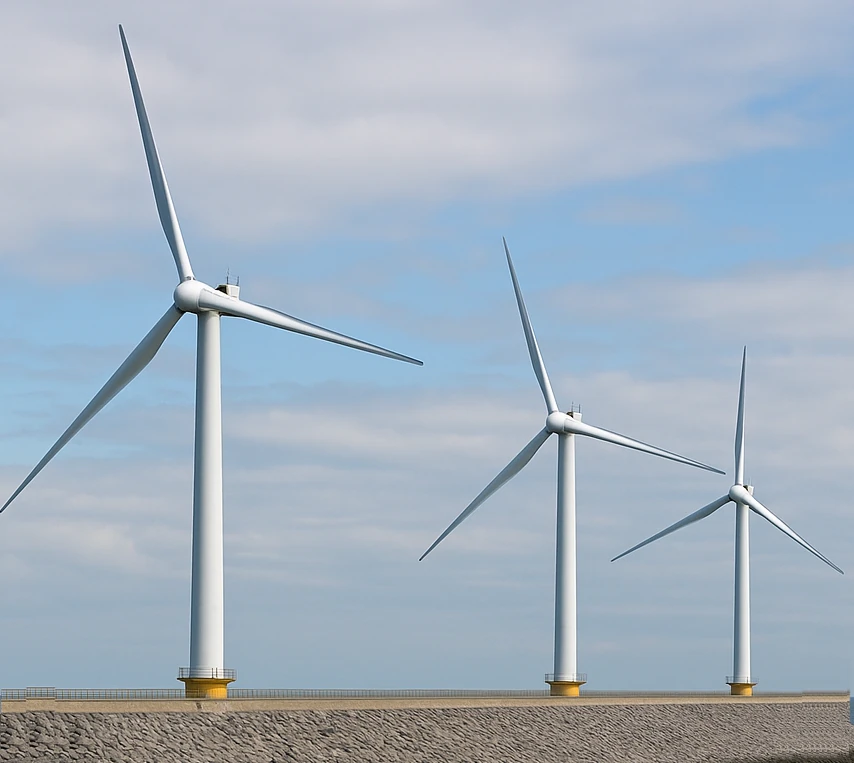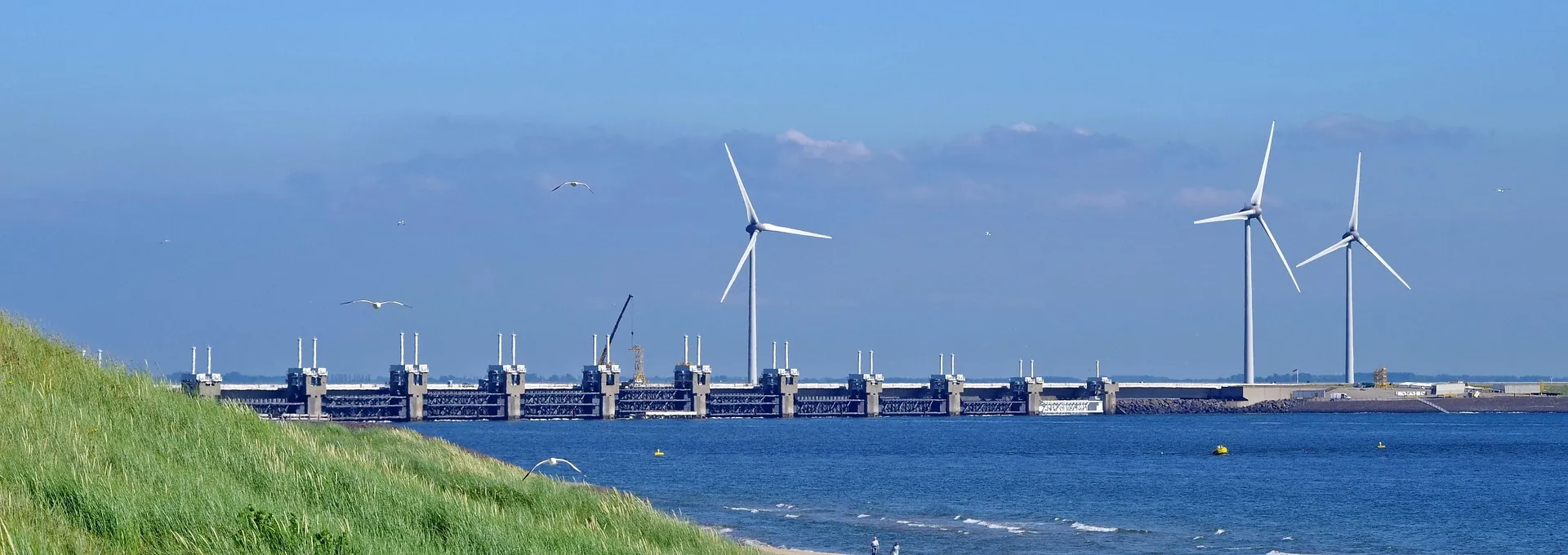Wind energy from the North Sea – clean power for a sustainable future
Wind turbines on the existing protective dam foundation: efficient, easily accessible and safe. Integrated submarine cables run protected inside the dam, reducing maintenance costs and making sabotage more difficult.
The electricity flows via protected cables to the substation and from there into the high-voltage grid on land.

Foundation with dual purpose: protective dam + wind turbine
The wind turbines are erected directly on the existing foundation of the protective dam. This saves on construction costs, increases stability against storm surges and wave action, and offers clear logistical advantages:
- Easy access: Service teams can reach the turbines quickly and safely.
- Maintenance & inspection: Regular inspections can be planned – the route over the dam reduces downtime.
- Grid integration: Cable routes run protected within the dam structure to the substation.
Security aspect
Protection against acts of sabotage
The structural integration makes unauthorised access to critical components more difficult. Submarine cables are located in the dam, exposed sections are minimised, and monitoring points are clearly defined.
FAQ – Frequently Asked Questions
How does the protective dike make maintenance easier?
The dike provides fixed access routes, defined access zones, and weather protection. Teams can reach the turbines on a planned schedule without relying solely on boats.
How are sabotage risks reduced?
Cables run in protected conduits. Access points are minimized and can be monitored. Critical components are housed within the dike structure.
Are the installations visible from the shore?
That depends on the location and distance. Planning and permitting take sightlines, shipping routes, and nature conservation into account.



